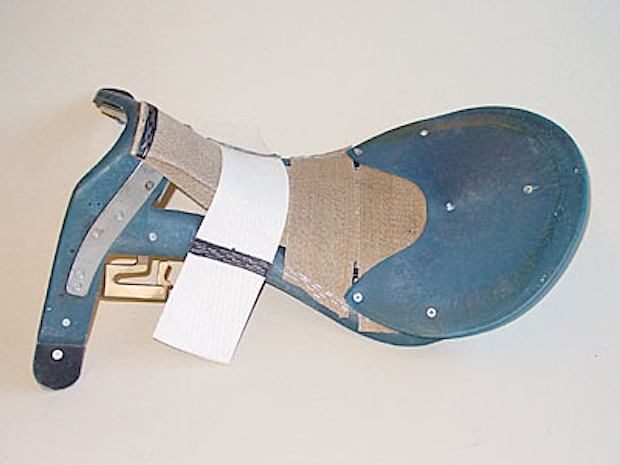The author Kathryn Sullivan-Butt is The Saddlefitter a Society of Master Saddlers Qualified fitter, ASFA fitter and an EA accredited coach. With formal saddle and saddlefit training in Australia, UK, US and Europe she is fortunate to have had the opportunity to train under (and quite frankly ask endless questions of) some of the industry’s most respected leaders. She fits full time in South-East Queensland.
FITTINGS & FLOCKING
Open the bonnet of a BMW, a Ferrari or a Bentley and I am sure that a car aficionado can wax lyrical about what makes these vehicles so worthy of the price. For me it is the same when conducting a saddle autopsy, dropping the panel to view the tree, the fittings, the craftsmanship and the flocking. Like your car, in a saddle, good quality suggests longevity, comfort and safety.
Starting at the foundation:
Trees are the basic structure around which most saddles are built. The whole purpose of a tree is to ensure the spine of the horse is kept clear while carrying the weight of the rider. Quality trees are built to last, are symmetrical, often have built in flexibility to move with the horse’s movement, use quality fittings to attach stirrup bars/billets and do not spread underneath the rider. The best saddle companies know the importance of quality trees and a high quality tree can be as much as several thousand dollars additional cost in the top saddles. A quality, safe tree is not exclusive to the high priced saddles but should certainly be examined in the older or off shore cheap models for the safety of rider and horse.
Taking the pressure:
Panels are the soft cushioned underbelly of your saddle that protects the horse’s back as they absorb impact from the rider. Panels typically in most modern saddles contain either latex, foam, pure wool, synthetic wool, air bags or a combination of the above. For hundreds of years saddlers have gravitated towards the best quality wool flocking that has a tendency to crinkle and absorb pressure and thus protect the horse. Whether pure wool or a synthetic wool the panel should still yield to pressure and have a soft spongy feel a flocked panel that has lost this give is due to be reflocked and a panel that feels like a brick, is going to have the repeated effect of a brick on your horse’s back. Today there is a plethora of fabrics in the panel and in better quality saddles this will have been tested for endurance and effect as the panel is so very important to your horse’s well being and performance. Be it wool, air, latex or other, the educated horse owner will examine these options and decide the one that meets their needs best (and that of their horse).
Quality comes at a price, saddles that are flocked with cotton tailings swept up off a factory floor (and yes I have opened to panel due for reflocking and discovered this) have no give and in this particular case a lumpy consistency. At the other end an exacting saddler craftsman may examine a bale of a particular type of wool known to absorb pressure best and select only this to use in his saddles. In the same vein a quality saddle fitter will ensure a quality wool is used in total reflocks or take the care to ensure for partial reflocks that the flocking used will match that already in the saddle so that the panel consistency is smooth and less likely to form clumps. Like tyres on a car the panels of your saddle should be checked for wear and when required, replaced. Again like your car tyres you get what you pay for.
So while your pink trimmed saddle may look pretty remember it is what is under the bonnet that counts and make sure these fundamentals are safe for you and your horse. A better quality reputable synthetic saddle with a safe tree and suitable flocking may well be a better option than a poor quality saddle that has cut costs on flocking, fittings and tree.




